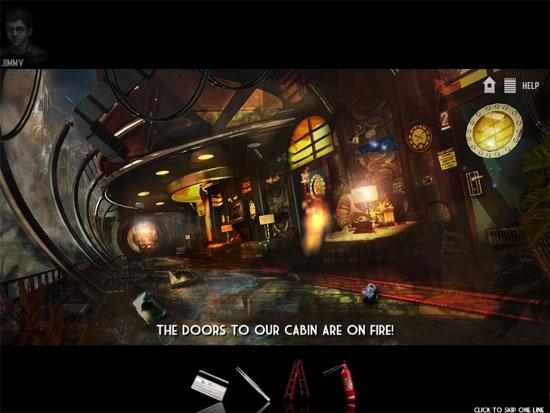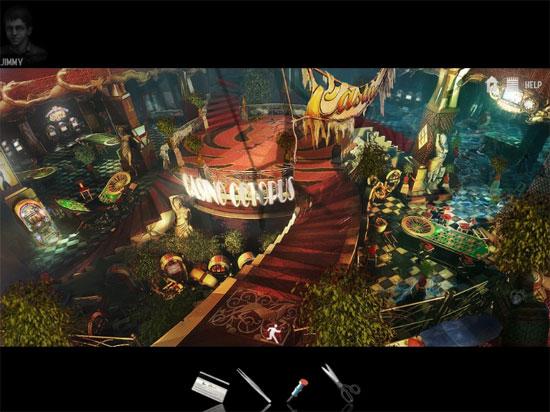- Wondering how to get Monopoly GO! free rolls? Well, you’ve come to the right place. In this guide, we provide you with a bunch of tips and tricks to get some free rolls for the hit new mobile game. We’ll …
Best Roblox Horror Games to Play Right Now – Updated Weekly
By Adele Wilson
Our Best Roblox Horror Games guide features the scariest and most creative experiences to play right now on the platform!The BEST Roblox Games of The Week – Games You Need To Play!
By Sho Roberts
Our feature shares our pick for the Best Roblox Games of the week! With our feature, we guarantee you'll find something new to play!All Grades in Type Soul – Each Race Explained
By Adele Wilson
Our All Grades in Type Soul guide lists every grade in the game for all races, including how to increase your grade quickly!
Nightmare on the Pacific Review
Nightmare on the Pacific is noteworthy due to its cinematic cutscenes and full voice acting, in addition to its balance of hidden object and puzzle gameplay. Unfortunately, some pacing issues late in the game put a damper on the otherwise enjoyable hidden object game.

Nightmare on the Pacific
Nightmare on the Pacific is noteworthy due to its cinematic cutscenes and full voice acting, in addition to its balance of hidden object and puzzle gameplay. Unfortunately, some pacing issues late in the game put a damper on the otherwise enjoyable hidden object game.
Nightmare on the Pacific follows the Brooks family, who was enjoying a lovely family vacation on the Neptune cruise ship when it is struck by a Hurricane. You play as the matriarch of the family, and are separated from your family – your husband, daughter and son – during the storm. While you have a chance to leave the ship, you refuse to leave your family behind. Thus begins your journey of tracking down the missing members of your family and escaping the ship alive before the Pacific Ocean claims it forever.

Nightmare on the Pacific combines basic hidden object gameplay (find items from a list) and a variety of puzzles like those you would expect from such a game. You’ll put together jigsaw puzzles, find and replace missing parts of machines to make them function, solve tile-sliding puzzles, and otherwise navigate the cruise ship searching for one family member at a time through a series of seamlessly connected chapters.
While the gameplay is nothing new, it does offer a great balance between the various gameplay types, so it’s unlikely you’ll find yourself tired of searching for items, as there tends to be a lot of content to get through in between. After every hidden object scene, you’ll be given at least one item that can be useful to you elsewhere on the ship. Find a hook, for instance, and it can allow you to reach a keycard that is hanging from a pole. Take the keycard back to your room and unlock the door, and so on and so forth.
With all of this backtracking through various floors and even two parts of the ship (the ship splits in two as you play the game), it can at times leave you a bit confused as to what to do next. Items may not always have an immediate recognizable purpose, so you’ll need to think outside of the box to figure out where some items go (for instance, when you find a toaster, the use of said toaster is anything but making food). Luckily, the Premium Edition of the title contains a step-by-step strategy guide if you get confused, but even if you stick with the standard edition of the game, the user interface will keep track of your current task(s) by presenting you with icons that run along the top of the screen.

In terms of the game’s presentation, there is complete voice acting throughout the story, but the quality therein is less than stellar, to put it politely. The other production values are quite high, including cinematic cutscenes and graphics that are better than average, especially in one part of the game, where you are in a portion of the ship that has capsized, leaving the rooms upside down, with debris all over the “floor.”
Nightmare on the Pacific starts with a great feeling of panic, as rooms are flooded and electricity crackles from dangling wires. The enveloping atmosphere continues as you make your way through the game, but you can unfortunately make your way through the entirety in just two hours or less, depending on how often you use hints, puzzle skips, or the strategy guide (if you have it).
For Premium Edition purchasers, you’ll have access to an Alternate Ending, which is simply a cutscene showing a different ending to the game, and to the Prequel, which lasts for the better part of 30 minutes, and shows what happens to the Brooks family in the hours before the hurricane strikes the Neptune.
All told, Nightmare on the Pacific has a great premise, and it is carried out decently enough for the short time that it lasts. There are some pacing issues at the end of the game, making the ending feel a bit rushed (it takes less than five minutes to find your final missing family member), but if you’re simply looking for an enjoyable gameplay experience with a great atmosphere and relatively high attention to detail, this is one worth picking up.

The good

The bad
More articles...
Monopoly GO! Free Rolls – Links For Free Dice
By Glen Fox
Wondering how to get Monopoly GO! free rolls? Well, you’ve come to the right place. In this guide, we provide you with a bunch of tips and tricks to get some free rolls for the hit new mobile game. We’ll …Best Roblox Horror Games to Play Right Now – Updated Weekly
By Adele Wilson
Our Best Roblox Horror Games guide features the scariest and most creative experiences to play right now on the platform!The BEST Roblox Games of The Week – Games You Need To Play!
By Sho Roberts
Our feature shares our pick for the Best Roblox Games of the week! With our feature, we guarantee you'll find something new to play!All Grades in Type Soul – Each Race Explained
By Adele Wilson
Our All Grades in Type Soul guide lists every grade in the game for all races, including how to increase your grade quickly!







